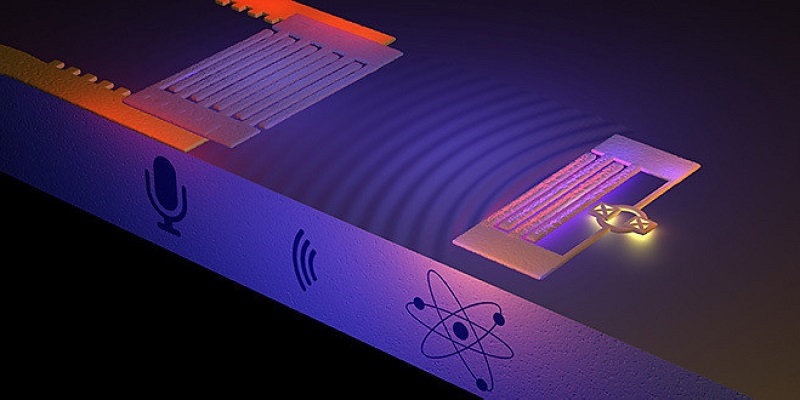
In 1913, legendary Danish physicist Niels Bohr created the Bohr model to help mankind understand what an atom looks like. Nearly a century later in 2014, scientists from Columbia University and Sweden’s Chalmers University of technology are attempting to capture what an atom sounds like when it vibrates. The accomplishment has the potential to develop a new and more plausible model of quantum computing.
Although fundamental physics dictates that anytime an object moves or vibrates it will produce sound, it was not until this recent experiment that scientists were able to verify that these same properties also extend to the atomic state. “The sound amplitude, or strength, is very weak,” stated Göran Johansson, a co-author of the study which was originally published in the journal Science. “Basically, when you excite the atom, it creates a sound, one phonon at a time, according to theory. It's the weakest possible sound possible at the frequency [that it vibrates].”
To perform the experiment, Johansson and his team created an artificial atom similar to the kind used in quantum experiments, and excited it. Next, a special chip converted the resulting acoustic emissions into microwaves, as unaltered acoustic waves are too miniscule to be recorded. Microwaves on the other hand, have an amplitude that is large enough to be detected once it the wave is fed into a low-temperature microwaving amplifier. The technology used in the chip is the same kind used to read superconducting qubits, short for quantum bit or the quantum analog of the traditional bit. Unlike bits, who exists the state of 0 or 1, qubits can also be a superposition of both, meaning they are ultra-dense.
So what does this have to do with quantum computing?
The scope of the experiment was twofold: One, to capture the softest sound ever let loose, and two, to explore the quantum nature of sound. Previously, quantum experiments involved particles of light called photons, but photons move too rapidly to control, whereas phonons – the atoms’ sound particles – move 10^5 times slower, giving you time to modify the signal. This reduced velocity enables “new dynamic schemes for tapping and processing quanta,” says Johansson, implying the key to quantum computers may lie within quantum sound, not light.
The next goal for Johansson and Co. is to record the sound itself, rather than observe the effect of its waves (once they’ve been converted to microwaves).
Via Science/Motherboard
Advertisement
Learn more about Electronic Products Magazine





